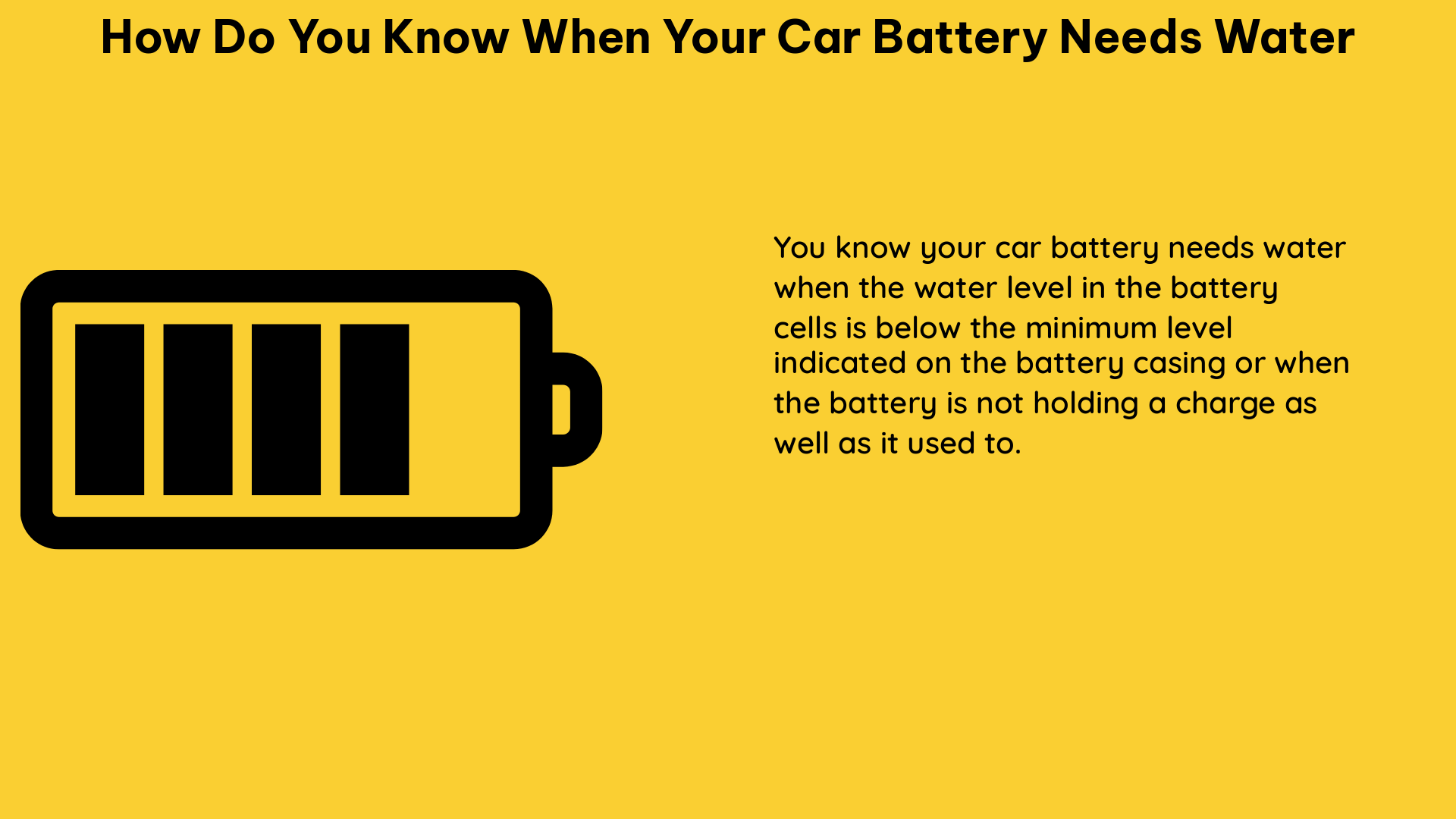Maintaining the proper water level in your car’s lead-acid battery is crucial for its optimal performance and longevity. When a lead-acid battery is charged, the water in the electrolyte is split into hydrogen and oxygen, leading to water loss through a process called gassing. This is more pronounced in vented batteries, which allow gases to escape, unlike sealed batteries like gel and AGM batteries.
Understanding the Role of Water in Lead-Acid Batteries
Water plays a vital role in protecting the battery’s active material and generating power. The electrolyte, a mixture of sulfuric acid and water, is responsible for conducting the electrical current and facilitating the chemical reactions within the battery. As the battery is charged and discharged, the water content in the electrolyte fluctuates, and it’s essential to maintain the proper water level to ensure the battery’s health and performance.
Checking the Electrolyte Level

To determine if your car battery needs water, you can manually inspect the electrolyte level or use a battery water level indicator.
Manual Inspection
- Locate the cell caps or vent caps on the top of the battery.
- Remove the caps to expose the individual battery cells.
- Visually inspect the electrolyte level in each cell. The electrolyte should be covering the top of the protective splash plate.
- If the electrolyte level is below the splash plate and some plates are exposed, the battery needs watering.
Battery Water Level Indicator
Many modern car batteries come equipped with a built-in water level indicator. This device typically has a red, yellow, or green light that indicates the water level status:
- Red light: Low water level, indicating the need to add water.
- Yellow light: Optimal water level.
- Green light: Full water level.
If your battery has a water level indicator, regularly check it to ensure the water level is within the recommended range.
Adding Water to the Battery
When adding water to your car battery, it’s essential to follow safety precautions due to the battery’s corrosive chemicals and the potential for acid splashing, skin burns, and inhalation of toxic gases like hydrogen.
Safety Tips
- Wear protective gloves and eye protection.
- Add water only after the battery has been fully charged and cooled down.
- Avoid overfilling the battery cells, as this can dilute the electrolyte and reduce battery performance.
- Use only distilled water, as tap water contains minerals that can be harmful to the battery.
- Dispose of any spilled electrolyte or water properly, as they can be hazardous to the environment.
Watering Frequency
The frequency of watering your car battery depends on several factors, including:
- Battery usage: Batteries used more frequently, such as in a forklift or a car driven daily, may require watering more often than a battery used less frequently, like in a golf cart.
- Environmental conditions: Hot weather can increase the rate of water loss, requiring more frequent watering.
- Battery age: Older batteries may require more frequent watering as their internal components wear down.
As a general guideline, check your battery’s water level at least once a month, and follow the manufacturer’s recommendations for watering schedules based on your specific usage and environmental conditions.
Symptoms of a Battery Low on Water
If your car battery is low on water, you may experience the following symptoms:
- Reduced battery power and cranking ability
- Difficulty starting the engine
- Battery not charging fully during driving or while connected to a charger
- Shortened battery lifespan
Addressing a low water level promptly can help prevent further damage to the battery and ensure its optimal performance and longevity.
Conclusion
Regularly checking and maintaining the water level in your car’s lead-acid battery is essential for its proper functioning and extended lifespan. By understanding the role of water, following the correct procedures for inspecting and adding water, and considering the frequency of use and environmental factors, you can ensure your car battery is always in top condition.
References:
– Foxtron Power Solutions – Adding Water to Battery
– YouTube – How to Add Water to a Car Battery
– Crown Battery – Watering Your Lead-Acid Battery: The Basics

The lambdageeks.com Core SME Team is a group of experienced subject matter experts from diverse scientific and technical fields including Physics, Chemistry, Technology,Electronics & Electrical Engineering, Automotive, Mechanical Engineering. Our team collaborates to create high-quality, well-researched articles on a wide range of science and technology topics for the lambdageeks.com website.
All Our Senior SME are having more than 7 Years of experience in the respective fields . They are either Working Industry Professionals or assocaited With different Universities. Refer Our Authors Page to get to know About our Core SMEs.